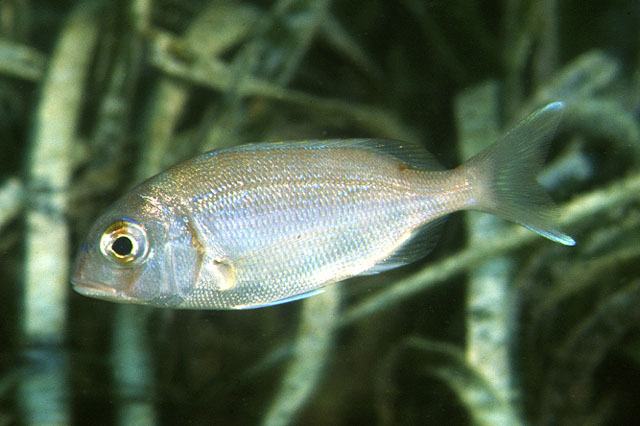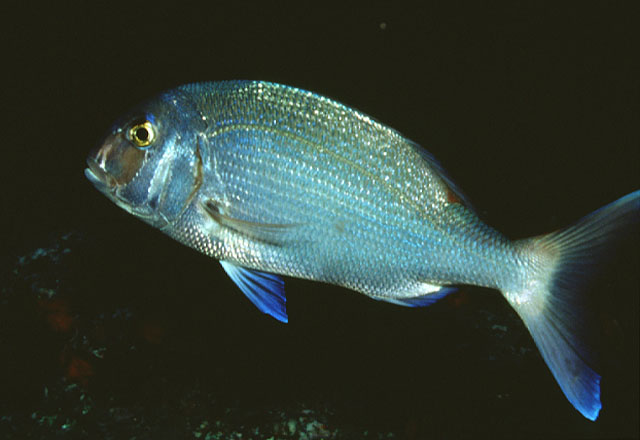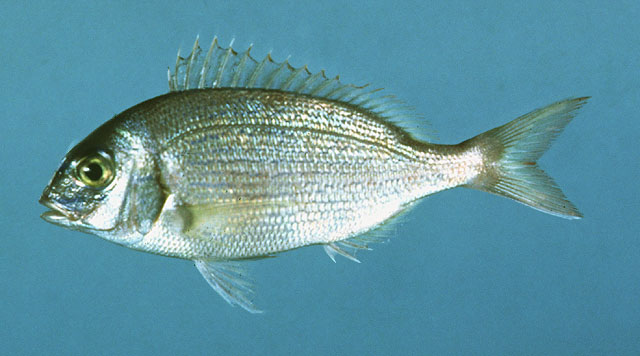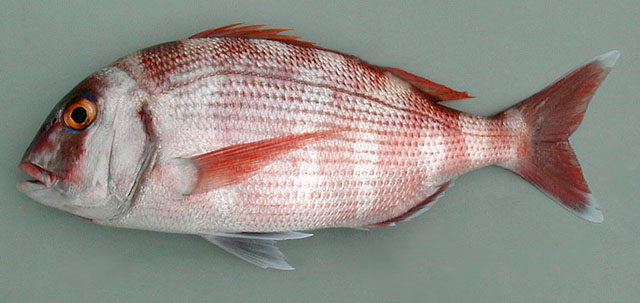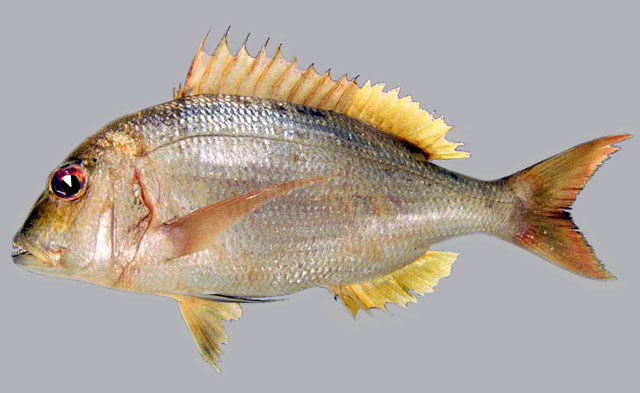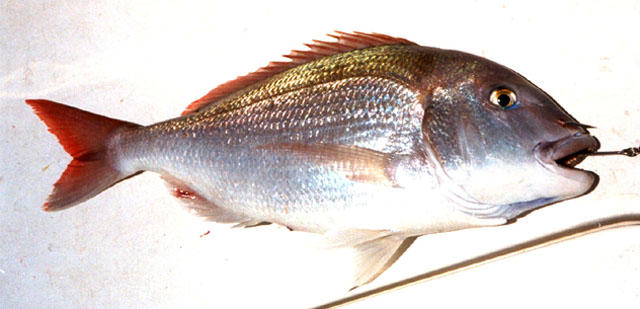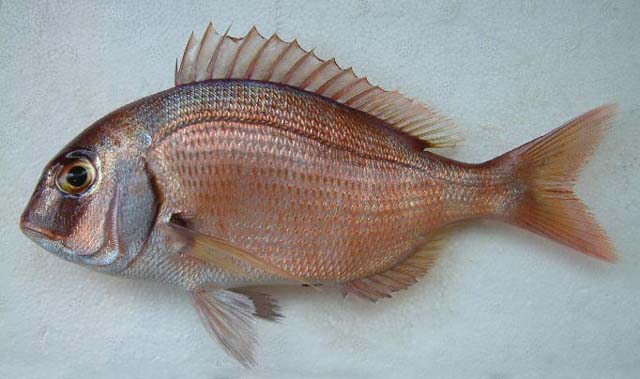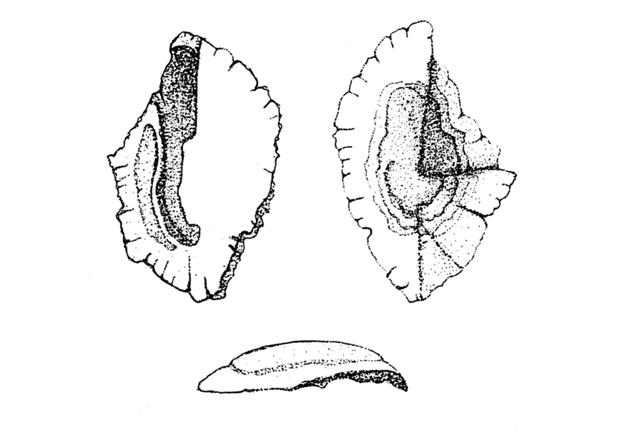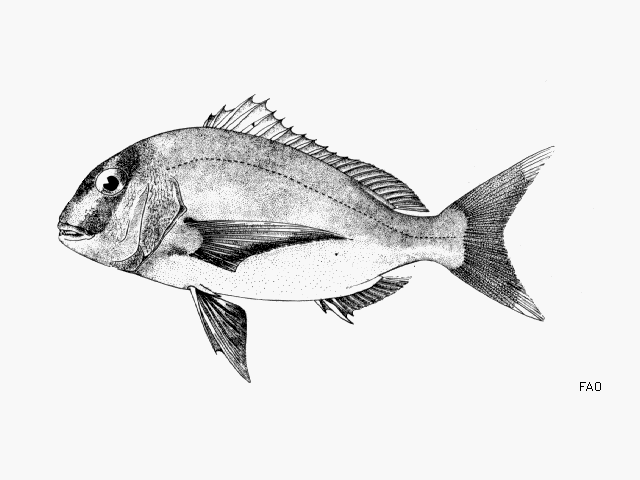Pagrus
pagrus
(Linnaeus,
1758)
Red porgy
View all media / Upload your photos and videos
Expand all
Classification / Names
Teleostei (teleosts) > Eupercaria/misc (Various families in series Eupercaria) >
Sparidae (Porgies)
Etymology: Pagrus: Greek, pagros = a fish, Dentex, sp. (Ref. 45335).
More on author:
Linnaeus.
Environment / milieu / depth range / climate zone / distribution range
Distribution
Eastern Atlantic: Strait of Gibraltar to 15°N (rare southward 20°N), including Madeira and the Canary Islands; Mediterranean and northward to the British Isles. Western Atlantic: New York, USA and northern Gulf of Mexico to Argentina (Ref. 7251), including the continental coast of the Caribbean Sea (Ref. 9626).
Maps

Pagrus pagrus / Native range
AquaMaps Data sources:
GBIF
OBIS
This map was computer-generated and has not yet been reviewed.

Pagrus pagrus / Suitable habitat
AquaMaps Data sources:
GBIF
OBIS
This map was computer-generated and has not yet been reviewed.

Pagrus pagrus / Point map
AquaMaps Data sources:
GBIF
OBIS
This map was computer-generated and has not yet been reviewed.

Pagrus pagrus / Year 2050
AquaMaps Data sources:
GBIF
OBIS
This map was computer-generated and has not yet been reviewed.
Length at first maturity / Size / Weight / Age
Biology
Found over rock, rubble, or sand bottoms (young frequently found on seagrass beds and the continental shelf (Ref. 47377)) down to about 250 m depth, often above 150 m. In southwest Brazil found in 160 m depth (Ref. 47377). Feeds on crustaceans, fishes, and mollusks (Ref. 3688). Its toxic nature is uncertain (Ref. 4690). Marketed fresh and frozen (Ref. 9987). Reported weights of caught individuals were between 9 to 17 kgs (9-10 off the west coast of Greece) (Hans Bollnert, hassebollnert@yahoo.gr, pers.comm. 12/09). It is parasitised by the monogeneans Anoplodiscus longivaginatus and Anoplodiscus richiardii (species inquirenda) on the fins and body surface (Ref. 124057).
Life cycle and mating behavior
Main reference
Bauchot, M.-L. and J.-C. Hureau 1990 Sparidae. p. 790-812. In J.C. Quero, J.C. Hureau, C. Karrer, A. Post and L. Saldanha (eds.) Check-list of the fishes of the eastern tropical Atlantic (CLOFETA). JNICT, Lisbon; SEI, Paris; and UNESCO, Paris. Vol. 2. (Ref. 3688)
IUCN Red List Status (Ref. 125652)
Least Concern (LC); date assessed: August 17 2009
CITES (Ref. 131153)
Not Evaluated
CMS (Ref. 116361)
Not Evaluated
Threat to humans
Reports of ciguatera poisoning (Ref. 4690)
More information
- Countries
- FAO areas
- Ecosystems
- Occurrences
- Introductions
- Stocks
- Ecology
- Diet
- Food items
- Food consumption
- Ration
- Common names
- Synonyms
- Metabolism
- Predators
- Ecotoxicology
- Reproduction
- Maturity
- Spawning
- Spawning aggregation
- Fecundity
- Eggs
- Egg development
- Age/Size
- Growth
- Length-weight
- Length-length
- Length-frequencies
- Morphometrics
- Morphology
- Larvae
- Larval dynamics
- Recruitment
- Abundance
- References
- Aquaculture
- Aquaculture profile
- Strains
- Genetics
- Allele frequencies
- Heritability
- Diseases
- Processing
- Mass conversion
- Vision
- Pictures
- Stamps, Coins Misc.
- Sounds
- Ciguatera
- Speed
- Swim. type
- Gill area
- Otoliths
- Brains
Estimates based on models
Preferred temperature (Ref. 123201): 15.8 - 27.8, mean 24.1 °C (based on 1356 cells).
Phylogenetic diversity index (Ref. 82804): PD50 = 0.5156 [Uniqueness, from 0.5 = low to 2.0 = high].
Bayesian length-weight: a=0.01318 (0.01200 - 0.01448), b=3.03 (3.00 - 3.06), in cm total length, based on LWR estimates for this species (Ref. 93245).
Trophic level (Ref. 69278): 3.9 ±0.2 se; Based on diet studies.
Generation time: 6.6 (5.1 - 10.0) years. Estimated as median ln(3)/K based on 12 growth studies.
Resilience (Ref. 120179): Medium, minimum population doubling time 1.4 - 4.4 years (K=0.13-0.27; tmax=11; tm=0.9-3.0).
Prior r = 0.28, 95% CL = 0.19 - 0.42, Based on 1 full stock assessment.
Fishing vulnerability (Ref. 59153): High vulnerability (58 of 100).
Climate vulnerability (Ref. 125649): Moderate to high vulnerability (51 of 100).
Price category (Ref. 80766): Very high; Reliable: based on ex-vessel price for this species.
Nutrients (Ref. 124155): Calcium = 33.4 [18.0, 61.6] mg/100g; Iron = 1 [0, 2] mg/100g; Protein = 19.8 [18.2, 21.3] %; Omega3 = 0.3 [0.2, 0.5] g/100g; Selenium = 39.3 [18.2, 75.9] μg/100g; VitaminA = 14.7 [4.2, 49.5] μg/100g; Zinc = 0.618 [0.326, 1.227] mg/100g (wet weight); based on nutrient studies.

